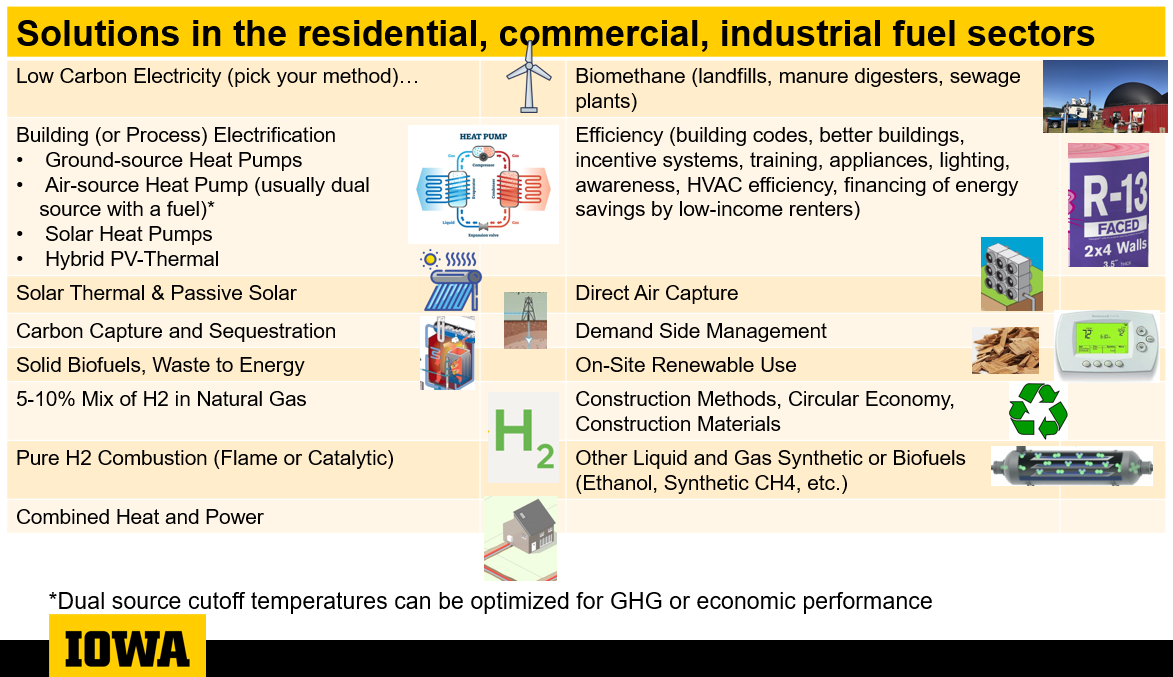There has been a lot of interest in CO2 pipelines, deep decarbonization in Iowa, and related issues, which has led to my participation in several public forums over the past few months. Thank you to all the event organizers and co-panelists!
Iowa Law School Panel - Nov 7, 2022
The University of Iowa College of Law (Hubbell Environmental Law Initiative) held a panel with the pipeline company Navigator, the Iowa Renewable Fuels Association, Sierra Club, myself, and landowner Jennifer Wiskus. That was recorded and is available here:
https://ppc.uiowa.edu/events/2022/11/07/carbon-pipelines-across-iowa-panel-discussion

The panel provided a good overview of the purpose of CO2 pipelines; the relationship between a CO2 pipeline and the ethanol industry; the carbon/GHG balance effects of the project; environmental and safety concerns; and issues of siting, regulatory authority, eminent domain, and other legal issues. Some of the specific numerical data on GHG are summarized at the bottom of this post.
Iowa Ideas Conference - Oct 13, 2022
I participated in a panel discussing the public benefit of CO2 pipelines, during the Iowa Ideas Conference, organized by the Cedar Rapids Gazette and moderated by investigative reporter Erin Jordan. This panel included John Satterfield, Director of Regulatory Affairs and ESG at Summit Carbon Solutions, and Bill Caram, executive director of the Pipeline Safety Trust.
The recording of the panel is available here: https://www.iowaideas.com/replays
From the Front Row - Student Podcast of the University of Iowa, College of Public Health
In October, I spoke with Anya Morozov, MPH student in epidemiology, for a podcast on climate change and health.
Climate Change Episode 2: What can we do to fight climate change. (other listening options available with links below)
Iowa Energy Efficiency Summit - Nov 9, 2022
The Iowa Energy Summit, organized by the Iowa Association for Energy Efficiency, is a great opportunity to connect with practitioners who are on the ground designing, installing, and managing energy projects -- and those who are building and implementing programs to accelerate adoption of best practices.
I gave a talk titled, "The status of decarbonization in Iowa, and how heat pumps, electrification, hydrogen, and/or biofuels will displace natural gas and propane," in which I synthesized some of the Decarb2040 program findings with the results from our paper on residential heat pumps in Energy Science & Engineering.

I really enjoyed these opportunities, and I will pull together all of the relevant thoughts and calculations on Midwestern carbon balance, ethanol CCS efficiency, how to achieve a 32%+ reduction in residential / commercial / industrial fuel use, into a paper or long-form post supported by publicly released calculations. Stay tuned.
Here are some of the numerical data on GHG and CO2 pipelines that I presented at the UI Law School event:
-
I argued that full buildout of a pipeline system reaching all ethanol refineries (and picking up 1 MMT CO2 from fertilizer plants) would lead to a net change in Iowa's carbon footprint of 10 MMT, or 8% of the total CO2e emissions.
-
I backed this up with an argument that a full LCA of the ethanol pipeline system would (if anyone did it) likely result in emissions of 9-16 kg CO2e for each 100 kg CO2 injected into deep storage. This is higher than the 5 kg estimate that Navigator has in their Iowa Utilities Board filing. Hopefully Navigator will provide me (or the board) with more justification on their value and their boundaries.
-
Finally, I stated that the pipelines would reduce the carbon intensity score of Iowa ethanol (assuming full buildout) from 60-72 to 35-49 g CO2e/MJ. The size of the drop is 22-25. [Compare to gasoline vehicles at 90, a midsize EV on the current Midwest (MROW) grid at 34, and EV on wind (or other near-zero footprint source) at 10].
-
Monte Shaw, from the Iowa Renewable Fuels Association, with knowledge of the certified individual carbon scores of actual ethanol plants, stated that the starting baselines were ~55 g CO2e/MJ, and he thought they would achieve a larger drop than the 22-25 g CO2e/MJ that I used (an idealized capture system with no energy or materials consumption would achieve a drop of 36 g CO2e/MJ).
Sources of the differences in these estimates include the following:
-
uncertainty about the absolute amount of N2O emitted from corn cultivation; the value in GREET and other approved calculators is based on emissions from well-drained soil, and may be up to a factor of 3 low. Upward revision of this could add 12 g CO2e/MJ;
-
different assumptions about the GHG efficiency of the pipelines; and
-
different assumptions about capture rates, leaks, and downtime of parts of the system -- all of which influence the ultimate fraction of fermentation CO2 undergoing sequestration.
-
I estimated the penalty from additional corn intensification to be about 2-3 g CO2e/MJ, due to an increase in corn-corn rotations and associated yield penalty and increased fertilizer requirement. The change in crop rotations and acreage that might result from further subsidization of ethanol production is difficult to estimate. Once you have an estimate of how overall corn demand might change, the changes in emissions are easier, but still uncertain. In any case, 2-3 g is fairly small in the scheme of things, and I did this as a check on whether these types of effects might be major factors -- and the answer is no. Probably not negligible either, but not a major factor.